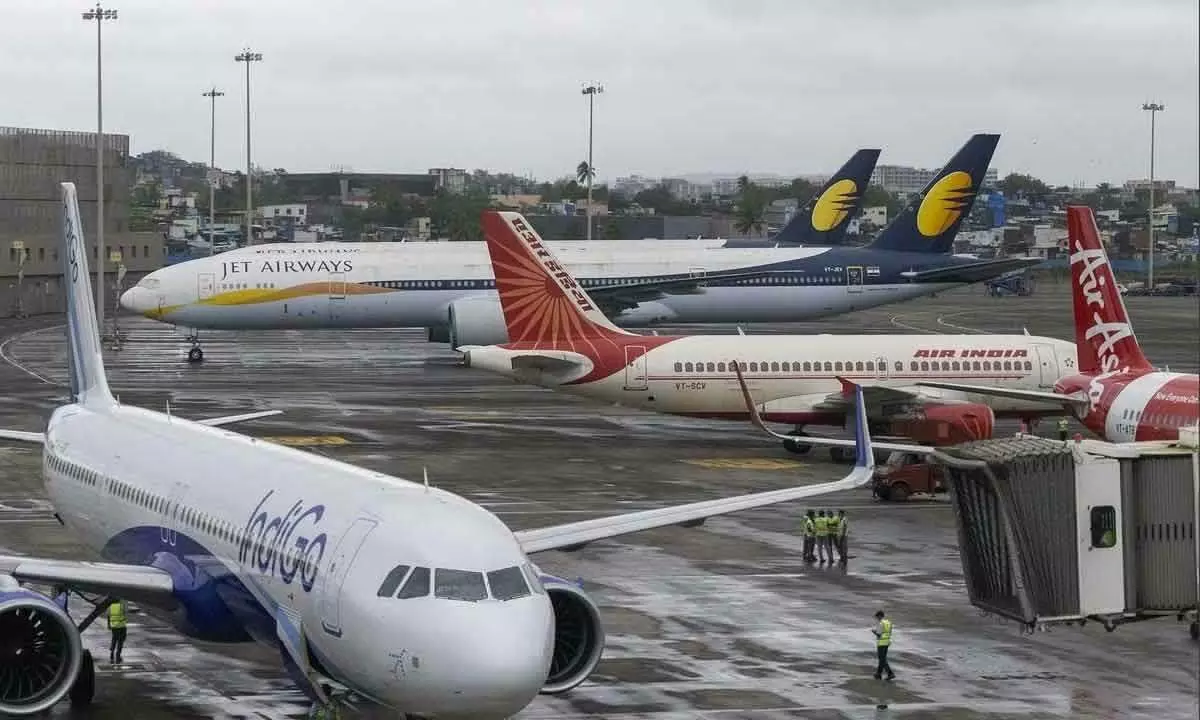Will airline industry return to profitability in 2023?
Airlines are expected to post a small net profit of $4.7 bn in 2023; lower oil price inflation and continuing pent-up demand likely to help airlines keep costs in check
image for illustrative purpose

Scheduled airline capacity finished as expected at 4.7 billion in 2022. Some 31.2 million flights were operated, 25 per cent more than the previous year, and not surprisingly average capacity per flight increased to 152 from 146 a year earlier.
The International Air Transport Association (IATA) expects a return to profitability for the global airline industry in 2023 as airlines continue to cut losses stemming from the effects of the Covid-19 pandemic to their business in 2022.
In 2023, airlines are expected to post a small net profit of $4.7 billion - a 0.6 per cent net profit margin. It is the first profit since 2019 when industry net profits were $26.4 billion (3.1 per cent net profit margin).
In 2022, airline net losses are expected to be $6.9 billion (an improvement on the $9.7 billion loss for 2022 in IATA's June outlook). This is significantly better than losses of $42.0 billion and $137.7 billion that were realized in 2021 and 2020 respectively.
As we look to 2023, the financial recovery will take shape with a first industry profit since 2019. That is a great achievement considering the scale of the financial and economic damage caused by government imposed pandemic restrictions. But a $4.7 billion profit on industry revenues of $779 billion also illustrates that there is much more ground to cover to put the global industry on a solid financial footing. Many airlines are sufficiently profitable to attract the capital needed to drive the industry forward as it decarbonizes. But many others are struggling for a variety of reasons.
Improved prospects for 2022 stem largely from strengthened yields and strong cost control in the face of rising fuel prices. Passenger yields are expected to grow by 8.4 per cent (up from the 5.6 per cent anticipated in June). Propelled by that strength, passenger revenues are expected to grow to $438 billion (up from $239 billion in 2021).
Air cargo revenues played a key role in cutting losses with revenues expected to reach $201.4 billion. That is an improvement compared with the June forecast, largely unchanged from 2021, and more than double the $100.8 billion earned in 2019.
Overall revenues are expected to grow by 43.6 per cent compared to 2021, reaching an estimated $727 billion. In 2023 the airline industry is expected to tip into profitability. Airlines are anticipated to earn a global net profit of $4.7 billion on revenues of $779 billion (0.6 per cent net margin). This expected improvement comes despite growing economic uncertainties as global GDP growth slows to 1.3 per cent (from 2.9 per cent in 2022).
Despite the economic uncertainties, there are plenty of reasons to be optimistic about 2023. Lower oil price inflation and continuing pent-up demand should help to keep costs in check as the strong growth trend continues. At the same time, with such thin margins, even an insignificant shift in any one of these variables has the potential to shift the balance into negative territory.
The passenger business is expected to generate revenues of $522 billion. Passenger demand is expected to reach 85.5 per cent of 2019 levels over the course of 2023. Much of this expectation takes into account the uncertainties of China's Zero Covid policies which are constraining both domestic and international markets. Nonetheless, passenger numbers are expected to surpass the four billion mark for the first time since 2019, with 4.2 billion travellers expected to fly.
Cargo markets are expected to come under increased pressure in 2023. Revenues are expected to be $149.4 billion, which is $52 billion less than 2022 but still $48.6 billion stronger than 2019. With economic uncertainty, cargo volumes are expected to decrease to 57.7 million tonnes, from a peak of 65.6 million tonnes in 2021. As belly capacity grows in line with the recovery in passenger markets, yields are expected to take a significant step back. IATA expects a fall of 22.6 per cent in cargo yields, mostly in the latter part of the year when the impact of inflation-cooling measures are expected to bite. To put the yield decline in context, cargo yields grew by 52.5 per cent in 2020, 24.2 per cent in 2021 and 7.2 per cent in 2022. Even the sizable and expected decline leaves cargo yields well-above pre-Covid levels. The job of airline managements will remain challenging as careful watch on economic uncertainties will be critical. The good news is that airlines have built flexibility into their business models to be able to handle the economic accelerations and decelerations impacting demand. Airline profitability is razor thin. Each passenger carried is expected to contribute on average just $1.11 to the industry's net profit. In most parts of the world that's far less than what is needed to buy cup of coffee.

